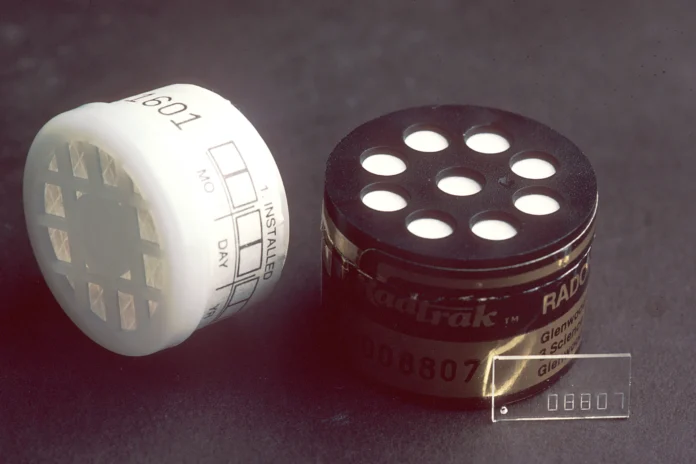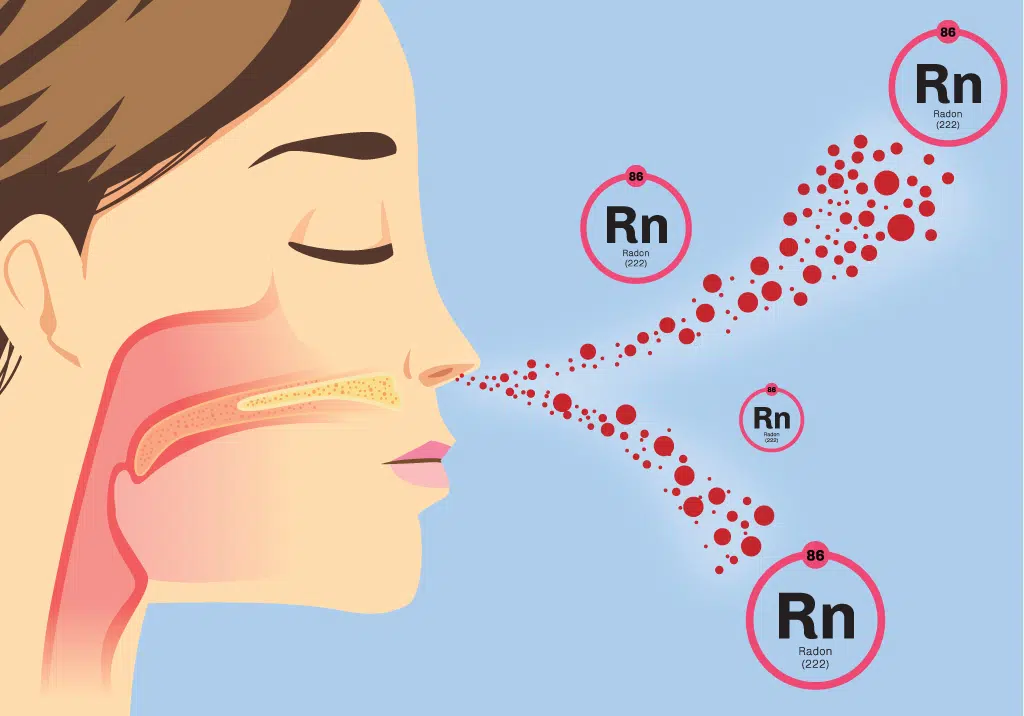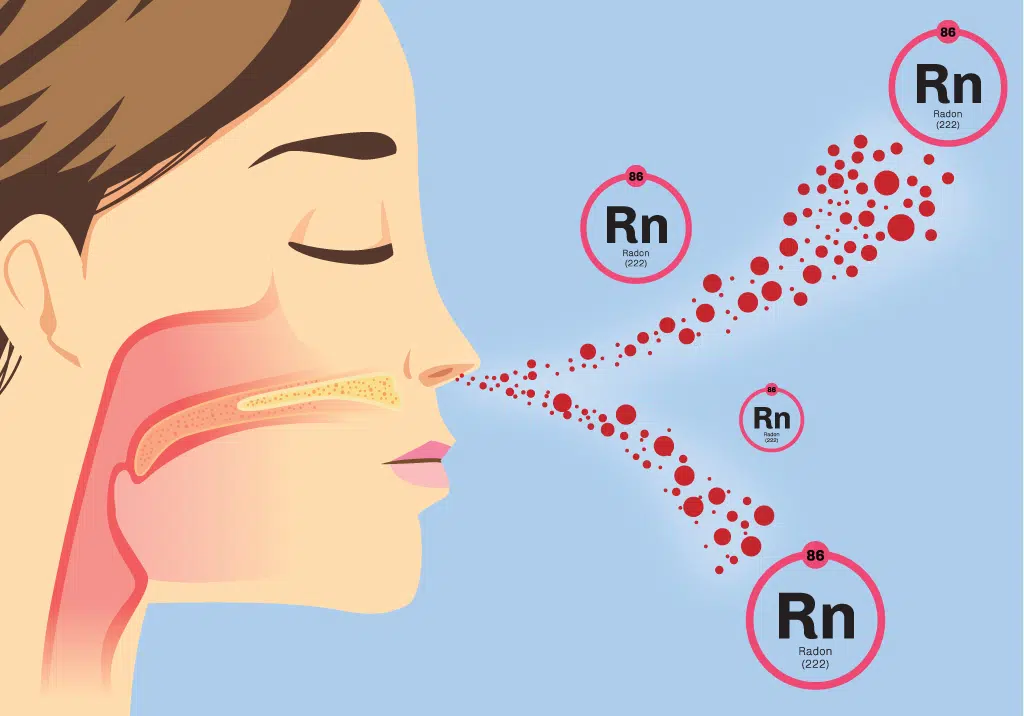
Radon gas (chemical symbol “Rn”) can be found in homes of any age, size, or construction. It enters homes through ground sources, gathering in areas that are lower than other parts of the home – such as basements or rooms used frequently, so it can be nefarious and difficult to deal with without professional help, so read on to learn about why exactly you should have it taken care of right away.
1. It’s a Risk to Your Health
The gas is an odorless, colorless and toxic gas produced when uranium in soil and rock breaks down, and can accumulate inside homes, offices and schools.
Radon exposure has long been associated with lung cancer; though not everyone exposed to elevated levels of Rn will go on to develop lung cancer, the risk is higher among smokers. Due to this increased risk, testing should be recommended in areas known for high levels of radon.
Rn exposure is of particular concern to people living in homes where there are other sources of Rn, such as basements and crawl spaces, where ground levels tend to be at their lowest points in your home and therefore where most radon emissions enter through the walls and floors.
Short-term kits that measure for the gas for 2-7 days provide accurate readings, while longer-term tests measuring levels for 90+ days or more provide more reliable readings of year-round average levels in your home.
If you want to find out the level of gas in your home, hire a reliable company to perform a test in it. A company like Radon Pros will install a device and monitor its concentration. They will send a sample to a lab for analysis, and should the results indicate the presence of Rn, they will suggest solutions to fix it.
There are various radon mitigation systems that can help to lower levels of radon in your home. One popular solution involves installing a vent pipe and fan that pulls radon out of the air, and vents it to the exterior.
2. It’s a Risk to Your Family’s Health

This gas, created from the decay of uranium found in soil, rock and water sources, can seep into your home through cracks in its foundation or walls and contributes to lung cancer cases annually with over 20,000 lung cancer deaths being attributed to it annually.
testing and mitigation is important for many reasons, not least of all protecting the wellbeing of your family from this potentially lethal gas. It reassures potential buyers that you’re a responsible homeowner taking great care in maintaining the property they purchase from you and can reduce insurance premiums significantly.
A test involves placing a small device called a “tester” in the lowest level of your home or multi-unit building and using an alpha track method to detect Rn particles; an exclusive liquid scintillation medium detects any alpha tracks left by passing particles that leave behind their tracks on passing through.
As more alpha tracks appear on a radon tester, your levels could potentially increase. If a test identifies high radon levels, immediate action must be taken in order to mitigate them and keep your home safe for living.
Engaging a certified tester is the ideal way to assess whether or not your home contains elevated Rn levels, and should they do, having it tested by one can enable an EPA-licensed remediation specialist install a mitigation system designed to bring them down safely for you and your family.
Retests should take place every two years or as required by your state. any significant changes such as remodeling should prompt another round of testing. Rn can be a serious health risk to both people and animals in your household, making a radon test the ideal way to protect yourself and those you love from this poisonous gas.
3. It’s a Risk to Your Home’s Value

If you’re thinking of selling your home, a radon test is an important first step towards protecting it from potential issues. This gas is a prevalent issue throughout many regions of the U.S.; its source lies within soil-bound uranium that breaks down over time, and exposure can pose serious health concerns and increase lung cancer risks.
An annual test should be a priority for every homeowner, no matter their intentions for selling or remaining in their current homes long-term. An affordable and simple test, this can quickly detect whether there’s an elevated Rn concentration present.
Importantly, both the Environmental Protection Agency (EPA) and US Surgeon General recommend testing all homes below the third floor for Rn, including new construction homes as well as older residences and multi-family structures. This applies equally to newer builds as well as older properties or multi-unit buildings.
Rn exposure should be of concern for everyone, but especially homebuyers and owners who plan on living in their home for an extended period. Although tests can be costly and time consuming, their testing costs are relatively affordable and easy-to-do – saving energy costs while protecting your family.
4. It’s a Risk to Your Pets’ Health

Radon is a radioactive gas that poses serious threats to health, including lung cancer and other respiratory illnesses.
Radon can enter homes through cracks in the ground, poorly sealed pipes or wires or through openings in walls – this is particularly common in basements and crawl spaces where levels of Rn tend to be highest.
Signs that could signal that Rn exposure has poisoned a pet include vomiting, abnormal swelling, breathing difficulty and loss of appetite. In extreme cases, exposure can even result in lung cancer development in animals.
This disease may be misdiagnosed as asthma in some instances, making treatment harder to spot and manage. a pet’s lungs can become damaged much more rapidly than human ones.
As soon as Rn is detected in your home, testing it immediately and taking steps to lower its levels are paramount to protecting it and your health. Radon tests can be completed either using a self-test kit or professional services can perform it.








